This article was co-authored by wikiHow Staff. Our trained team of editors and researchers validate articles for accuracy and comprehensiveness. wikiHow's Content Management Team carefully monitors the work from our editorial staff to ensure that each article is backed by trusted research and meets our high quality standards.
There are 9 references cited in this article, which can be found at the bottom of the page.
The wikiHow Video Team also followed the article's instructions and verified that they work.
This article has been viewed 115,522 times.
Learn more...
The arm wave is a fundamental move in the dance style known as popping. Although it isn’t a complicated move, it can bring a lot of motion to your dance. You start the wave on 1 arm, transition through your shoulders, then end the wave on the fingers of your other arm. Master the motions 1 at a time and practice often so you can add the arm wave to your dance routine.
Steps
Starting the Arm Wave
-
1Hold out both arms to form the shape of the letter "T." This is the starting point for the wave. Always keep your arms straight and level with your shoulders. As you go through the wave motion, you will need to move parts of your arms.While you learn the arm wave, your lower body will stay still. Eventually, you can practice moving around while doing the wave.[1]
Imagine that there is an invisible line where your arms are now. Your arms will generally stay level with this line as you do the arm wave. On a few occasions, part of your arm will rise above or drop below this line.
-
2Raise the fingers on your left hand. Continue holding your arms straight out to the side as you begin moving. Flex your wrist without raising or lowering your arms. Hold your fingers straight so they point up towards the sky.[2]
- This is the easiest part, but it also starts the arm wave, so get ready to let the movement flow through your arm!
- You can start the wave with either arm. However, it’s better to focus on 1 side first until you master the movement.
Advertisement -
3Lift your left wrist while bringing your hand down. Begin lowering your hand. As your fingers fall and point downward, your wrist should rise naturally. Your wrist will become the highest point on your arm. Remember to keep your arms in line with your shoulders. Your hand and fingers will drop down the imaginary line from your T-pose.[3]
- Practice this until you can transition smoothly from your fingers to your wrist. The rest of your wave should have similar a similar, smooth motion, so use it as a point of comparison.
-
4Twist your left arm inwards as you raise your elbow. Bring your left hand up so you are in a T-pose again. Begin lifting your arm upwards. To get it to come up, you will need to twist your forearm towards the front of your body. Bend your arm at the elbow in order to raise your elbow.[4]
- Twisting your arm inwards helps you lift your elbow. However, keep your hand flat and make sure your shoulder doesn’t rise up towards your neck.
- This is most likely going to be the hardest part of the arm wave for you. Practice it until it feels natural.
-
5Straighten your arm while lifting your shoulder. At this point, you need to move back into the T-pose position. Focus on keeping your hand flat as you twist your forearm back around. Straightening your forearm should cause your elbow to drop and your shoulder to rise up towards your ear.[5]
- Instead of moving your arm away to straighten it, try bringing your arm towards your body. Keep your arm straight as you move it.
- Leaning to the side or moving your arm back towards your ear is fine. Doing this can also help you lift your shoulder.
Transitioning and Finishing the Motion
-
1Roll your shoulders to pass the wave motion to your opposite arm. If you started the arm wave on your left side, you will be passing the wave to your right arm. Keep your left shoulder raised. Gradually lower your left shoulder while raising your right shoulder at the same time. You can then begin doing the arm wave on your other arm.[6]
- Pushing your chest out can make the transition easier. You can also roll your head a little in the direction of the wave to help get your shoulders moving.
- You left arm might feel pretty tired now. Normally you want to keep it up as you complete the wave, but you can drop it to rest it while you practice.
- For a more advanced wave, rotate your shoulder, bringing your arm forward as the wave motion moves to your other arm. Move your arms and other parts of your body each time.
-
2Rotate your right arm inward to raise your elbow. Finishing the wave involves the same moves as before, except you do them in reverse order. First, make sure your arms are still straight out in a T-position. To pass the wave from your shoulder to your elbow, rotate your arm towards the front of your body. Let your shoulder drop as your elbow comes up.[7]
- Getting your elbow into position will most likely be the toughest part of the wave, so don't worry if you can't get it right away.
-
3Bring your right wrist up as you straighten your arm. Move your elbow back down so your arm is straight out from your side in the T-pose position. Lift your wrist so it is the highest point on your arm. Remember to flex your wrist, keeping your fingers straight and pointed towards the floor.[8]
- Keep your arm level with your shoulders as you finish the wave.
-
4Raise your fingers as you bring your wrist down. Hold your fingers stiff and straight as you begin lifting them. Lower your wrist at the same time. Your fingers should come all the way up so they are pointed towards the ceiling.[9]
- You can curl your fingers towards your palm while lifting them. This might help you master the wave movement. However, make sure you straighten them back out before your wrist lowers completely.
-
5Lower your fingers so your arms are in the shape of the letter “T.” Finish the arm wave by going back to the T-pose baseline. This motion isn’t too hard, since all you need to do is flex your wrist a little to level out your hand. Both of your arms should be even with your shoulders and straight out from your body.
- Once you have mastered doing the arm wave in 1 direction, try starting with your opposite hand. Also try waving with both arms at the same times or reversing the wave motion.
- For a variation on the arm wave, try rotating your shoulders forward. Keep your body still and hold your arms out in front of you at first. Try doing the wave with your arms in different positions, including with your fingers touching in front of you!
Community Q&A
-
QuestionI can't do a proper arm wave with my left arm. How do I fix this?
 Community AnswerGo through the process of lifting these body parts: fingers, knuckles, wrist, elbow, shoulder. Practice in the mirror and make it flow.
Community AnswerGo through the process of lifting these body parts: fingers, knuckles, wrist, elbow, shoulder. Practice in the mirror and make it flow. -
QuestionIf a person is doubled-jointed, will it be more complicated?
 Community AnswerIt depends. Being double-jointed sometimes makes movements easier, as you can be more flexible with your body; however, it can sometimes be difficult to perform flowing movements, as they can look disjointed and sharp.
Community AnswerIt depends. Being double-jointed sometimes makes movements easier, as you can be more flexible with your body; however, it can sometimes be difficult to perform flowing movements, as they can look disjointed and sharp. -
QuestionMy right hand is not able to do an arm wave. How can I fix this?
 Community AnswerTry using your elbow a little more. Start out with your right elbow high, and then you'll start to get the feel.
Community AnswerTry using your elbow a little more. Start out with your right elbow high, and then you'll start to get the feel.
Warnings
- The arm wave isn’t a risky dance move, but you should still relax if your arms or shoulders feel tight.⧼thumbs_response⧽
- Your arms will get tired at first. Take a break before trying the arm wave again.⧼thumbs_response⧽
- Be careful when dancing around others, since you may hit them if you aren’t paying attention. Avoid flailing your arms while doing arm waves.⧼thumbs_response⧽
References
- ↑ https://www.youtube.com/watch?v=VCX1mNfTnx0&feature=youtu.be&t=28
- ↑ https://www.youtube.com/watch?v=K2FFULkmC-g&feature=youtu.be&t=133
- ↑ https://www.youtube.com/watch?v=VCX1mNfTnx0&feature=youtu.be&t=41
- ↑ https://www.youtube.com/watch?v=6CPtOe3GVwk&feature=youtu.be&t=63
- ↑ https://www.youtube.com/watch?v=K2FFULkmC-g&feature=youtu.be&t=176
- ↑ https://www.youtube.com/watch?v=VCX1mNfTnx0&feature=youtu.be&t=48
- ↑ https://www.youtube.com/watch?v=6CPtOe3GVwk&feature=youtu.be&t=100
- ↑ https://www.youtube.com/watch?v=6CPtOe3GVwk&feature=youtu.be&t=104
- ↑ https://www.youtube.com/watch?v=K2FFULkmC-g&feature=youtu.be&t=280
About This Article
The arm wave is a cool dance move where you stand with your arms outstretched in a T-shape and a wave flows from one hand through your arms to your hand on the other side. You'll need to move your wrist, elbow, shoulders, and then your other arm in sequence to make the wave look natural and free-flowing. Try breaking the arm wave into small steps and practicing in front a mirror to make sure it looks great. Don't be afraid to start slowly and increase your speed as you get more confident with the wave. For more tips, including how to incorporate the arm wave into other dance moves, read on!
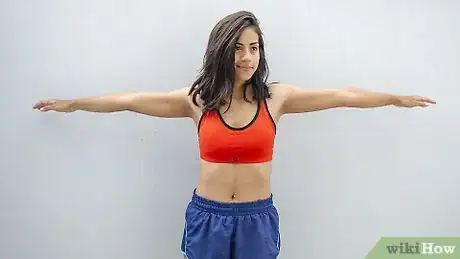
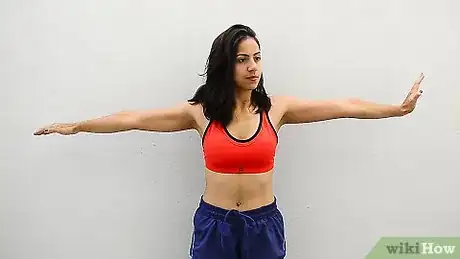
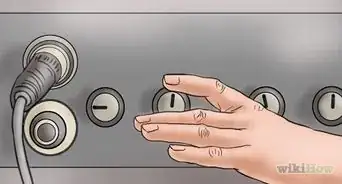
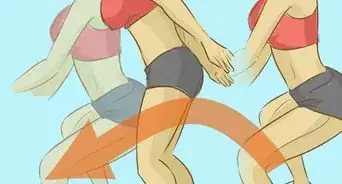
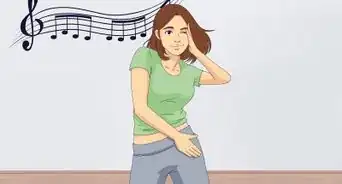
-Step-19-Version-2.webp)

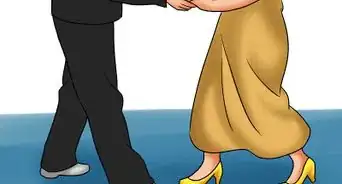





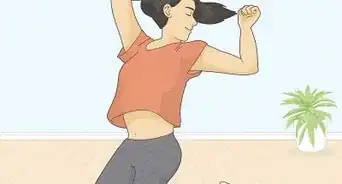







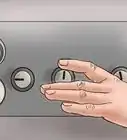


-Step-19-Version-2.webp)


































